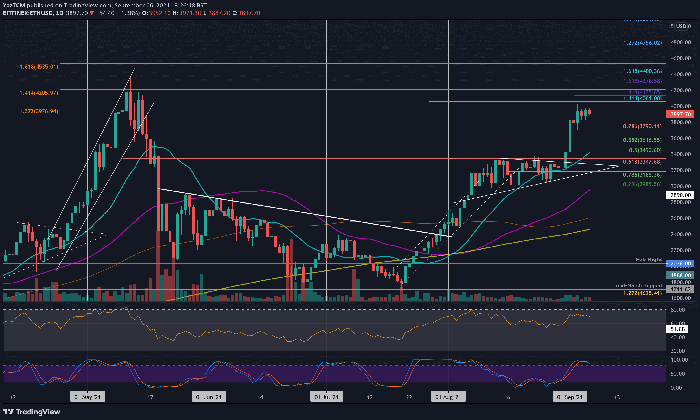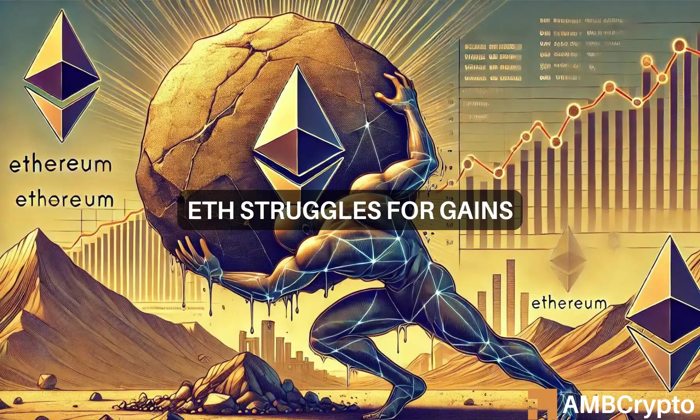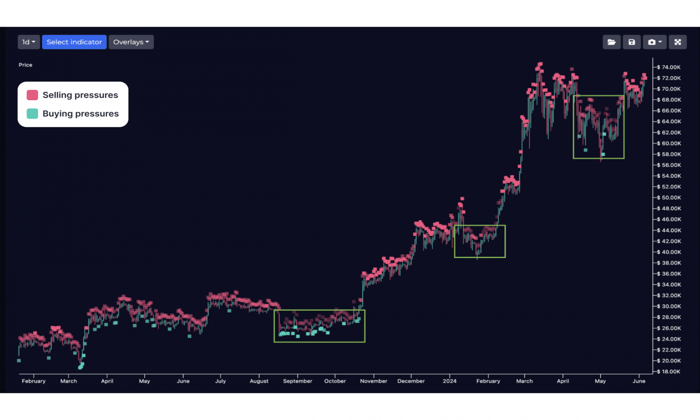The XRP Ledger DeFi Roadmap for 2025 promises to revolutionize how institutions interact with decentralized finance. Ripple, the innovative force behind the XRP Ledger, has outlined a comprehensive strategy to enhance its DeFi ecosystem, focusing on regulatory compliance and programmability. With the introduction of multi-purpose tokens and advanced decentralized exchange features, the roadmap aims to bridge the gap between traditional finance and the blockchain realm. These enhancements are not just about innovation; they emphasize the importance of creating a secure environment for institutional DeFi. As Ripple gears up for this transformative phase, the XRP Ledger is set to become a cornerstone of institutional-grade decentralized finance by the end of 2025, enriching the landscape of financial services globally.
The roadmap for decentralized finance on the XRP Ledger is poised to make significant strides in 2025, offering a new horizon for institutional users. Ripple’s recent initiatives focus on enhancing the capabilities of the XRP Ledger, making it more adaptable for various financial applications. Key developments include the introduction of semi-fungible tokens and sophisticated trading features that cater to regulatory needs. This strategic direction will not only facilitate seamless interactions between traditional assets and blockchain technology but also bolster the overall efficiency of decentralized finance solutions. As we look ahead, the evolving landscape of institutional DeFi on the XRP Ledger is set to redefine financial transactions and asset management.
Understanding XRP Ledger’s Institutional DeFi Roadmap for 2025
Ripple has laid out a detailed Institutional DeFi Roadmap for the XRP Ledger (XRPL) in 2025, aiming to enhance the ecosystem for institutional players. This initiative is crucial as it aligns with the growing demand for decentralized finance solutions that cater specifically to regulatory requirements. With the introduction of features like Credentials and a Permissioned decentralized exchange, Ripple seeks to ensure that institutions can engage in DeFi while adhering to compliance standards. This focus on regulatory compliance is expected to attract more traditional financial entities to leverage the benefits of blockchain technology.
The roadmap not only emphasizes compliance but also aims to enhance programmability within the XRPL. Developers will have access to more tools for creating innovative applications, facilitating a robust environment for institutional DeFi. By integrating features that allow for the seamless deployment of applications, Ripple is positioning XRPL as a leading platform for institutional DeFi solutions. The roadmap reflects Ripple’s commitment to staying ahead in the rapidly evolving DeFi landscape, making it an attractive option for institutional investors.
Key Features of XRPL’s 2025 DeFi Enhancements
One of the standout features of the XRP Ledger’s 2025 enhancements is the introduction of Multi-Purpose Tokens (MPTs). These tokens bridge the gap between fungible and non-fungible tokens, providing institutions with a flexible solution for tokenizing assets. MPTs are designed to handle complex data requirements, which is essential for representing traditional financial instruments on the blockchain. As institutions increasingly look to digitize their assets, MPTs will play a pivotal role in ensuring that tokenization meets both regulatory and operational needs.
Additionally, the upcoming lending features on XRPL will empower crypto-native businesses to create integrated solutions that fuse lending with Ripple payments, decentralized exchanges, and real-world assets. By utilizing automated market making (AMM) techniques, institutions can enjoy streamlined liquidity and efficient asset swaps. This comprehensive approach to lending and tokenization underscores Ripple’s strategy to create a versatile DeFi environment on XRPL, catering to the complex requirements of institutional clients.
The Role of Credentials in XRPL’s DeFi Framework
The integration of Credentials into the XRPL framework is a game-changer for institutional DeFi. This feature enhances the existing decentralized identity (DID) standard, allowing users to attest to specific criteria associated with their identities. By enabling institutions to present verified credentials, Ripple creates a secure environment for decentralized trading and asset management. This is particularly important in light of stringent regulations such as anti-money laundering (AML) and know-your-customer (KYC) requirements that institutions must navigate.
Moreover, the incorporation of Credentials facilitates the development of Permissioned Domains and decentralized exchanges. These environments will require institutions to meet specific credentialing standards before participating, thus ensuring compliance while fostering innovation. As the DeFi landscape matures, the ability to securely and efficiently manage identities will be crucial for institutional adoption, making Ripple’s approach a leading model in the blockchain space.
Exploring the Impact of Multi-Purpose Tokens on Asset Tokenization
Multi-Purpose Tokens (MPTs) represent a significant advancement in the way assets can be tokenized on the XRP Ledger. By providing a semi-fungible token model, MPTs allow institutions to tokenize assets while retaining essential metadata that traditional fungible tokens cannot accommodate. This flexibility is particularly beneficial for representing real-world assets like stocks and bonds, which have unique attributes that need to be accounted for on the blockchain.
As the demand for asset tokenization grows, MPTs will help institutions navigate the complexities of integrating traditional financial instruments into the blockchain ecosystem. This standardization not only simplifies the tokenization process but also enhances the interoperability of tokenized assets across different platforms. By leveraging MPTs, institutions can unlock new opportunities for investment and trading, ultimately driving greater adoption of the XRP Ledger within the DeFi market.
Advancements in Lending Features on XRPL
The upcoming lending features on the XRP Ledger are poised to revolutionize how crypto-native businesses operate. By integrating with Ripple payments, decentralized exchanges, and real-world assets, these features will create a seamless lending experience that minimizes liquidity fragmentation. The introduction of a default Ripple USD (RLUSD) vault is a key component of this strategy, ensuring that institutions have access to stable liquidity for their lending operations.
Additionally, the use of automated market making (AMM) for swaps will enhance the efficiency of the lending process. This feature enables institutions to manage their assets dynamically, responding to market fluctuations in real-time. As Ripple continues to refine its lending functionalities, the XRPL will emerge as an essential platform for institutions looking to harness the power of decentralized finance.
Enhancing Programmability on the XRP Ledger
Programmability is at the heart of Ripple’s DeFi enhancements for the XRP Ledger in 2025. With the introduction of Extensions, developers will have the ability to attach custom code to existing primitives, significantly enhancing the functionality of the network. This new capability simplifies the development process, allowing for the quick deployment of innovative features without the need for extensive reworking of existing smart contracts.
As developers explore the potential of XRPL’s enhanced programmability, we can expect a surge in the creation of unique decentralized applications and services. This flexibility not only caters to the needs of institutional users but also attracts a broader range of developers to the platform. By fostering an environment of innovation, Ripple is ensuring that the XRP Ledger remains competitive in the fast-moving DeFi landscape.
The Future of Decentralized Exchanges on XRPL
The introduction of Permissioned decentralized exchanges on the XRP Ledger marks a significant step toward creating a compliant trading environment for institutional players. These exchanges will require users to present specific credentials, ensuring that trading activities adhere to regulatory standards. This approach not only boosts confidence among institutional investors but also safeguards the integrity of the trading ecosystem.
In addition to compliance, the decentralized exchange features on XRPL will leverage advanced technologies like automated market making (AMM) to provide liquidity and efficiency. This combination of regulatory adherence and cutting-edge technology positions the XRPL as a frontrunner in supporting institutional trading activities. As the DeFi sector continues to evolve, such features will be crucial in attracting more traditional finance players to the blockchain.
Ripple’s Commitment to Regulatory Compliance in DeFi
Ripple’s focus on regulatory compliance within its DeFi roadmap for XRPL is a testament to its dedication to fostering a sustainable ecosystem. By developing features that adhere to compliance standards, Ripple is addressing one of the primary concerns of institutional investors. These enhancements ensure that as institutions venture into decentralized finance, they can do so with confidence, knowing that their activities align with existing regulations.
Moreover, Ripple’s proactive approach in embedding compliance into the fabric of its DeFi solutions sets a precedent for other blockchain projects. By prioritizing regulatory considerations, Ripple is paving the way for the broader adoption of DeFi solutions in traditional finance. This commitment not only enhances XRPL’s appeal but also contributes to the overall legitimacy of the blockchain sector.
The Potential of XRPL in the Growing DeFi Landscape
As the decentralized finance landscape continues to grow, the XRP Ledger is well-positioned to capitalize on emerging opportunities. With its focus on institutional DeFi enhancements, Ripple is creating a robust framework that caters to the unique needs of professional investors and financial institutions. This strategic positioning is expected to facilitate a surge in participation from traditional financial players seeking to leverage the benefits of blockchain technology.
Furthermore, the combination of advanced features such as Multi-Purpose Tokens, Permissioned decentralized exchanges, and enhanced programmability makes XRPL a compelling choice for institutions looking to innovate within the DeFi space. As Ripple implements these enhancements, the XRP Ledger will likely become a central hub for institutional DeFi activities, driving further growth and innovation in the blockchain ecosystem.
Frequently Asked Questions
What is the XRP Ledger DeFi Roadmap for 2025?
The XRP Ledger DeFi Roadmap for 2025, released by Ripple, outlines enhancements aimed at developing the institutional decentralized finance (DeFi) ecosystem on the XRPL. This roadmap focuses on regulatory compliance, programmability, and expanded lending options for institutions utilizing the XRP Ledger.
How will the XRP Ledger enhance its decentralized finance features in 2025?
In 2025, the XRP Ledger will enhance its decentralized finance features by introducing a Permissioned decentralized exchange (DEX) and adding a Credentials feature to the existing decentralized identity (DID) standard. These upgrades will facilitate regulatory compliance and allow institutions to participate in decentralized trading.
What are Multi-Purpose Tokens (MPTs) in the context of the XRP Ledger DeFi Roadmap?
Multi-Purpose Tokens (MPTs) are a new standard introduced in the XRP Ledger DeFi Roadmap for 2025. MPTs serve as semi-fungible tokens that bridge the gap between fungible tokens and non-fungible tokens (NFTs), enabling institutions to tokenize real-world assets while providing flexibility in representing traditional financial instruments.
What new lending capabilities are expected from the XRP Ledger in 2025?
The XRP Ledger is set to introduce new lending capabilities in 2025, allowing crypto-native businesses to integrate lending with Ripple payments, decentralized exchanges (DEXs), real-world assets (RWAs), and stablecoins. This feature will utilize a default Ripple USD (RLUSD) vault to enhance liquidity and employ automated market making (AMM) for swaps.
How will programmability be expanded on the XRP Ledger as part of the 2025 roadmap?
As part of the 2025 roadmap, the XRP Ledger will expand programmability by introducing Extensions that allow developers to attach code to existing primitives. This enhancement will support functionalities such as escrows and AMMs without the need for new smart contracts, unlocking new opportunities for developers on the XRPL.
What regulatory compliance measures are included in the XRP Ledger DeFi Roadmap?
The XRP Ledger DeFi Roadmap includes several regulatory compliance measures such as the development of a Permissioned decentralized exchange (DEX) and the integration of Credentials with the decentralized identity (DID) standard. These features will help institutions comply with anti-money laundering (AML) and know-your-customer (KYC) regulations.
Will the new features in the XRP Ledger DeFi Roadmap be subject to validator voting?
Yes, most of the new features outlined in the XRP Ledger DeFi Roadmap for 2025 are currently under consideration for voting by XRPL validators and are expected to be implemented soon, ensuring community involvement in the decision-making process.
| Key Feature | Description |
|---|---|
| Institutional DeFi Development | Ripple’s focus on enhancing XRPL’s DeFi ecosystem for institutions, emphasizing regulatory compliance and advanced lending options. |
| Decentralized Identity (DID) and Credentials | Addition of Credentials to the existing DID standard to create verifiable identities and support regulatory compliance in decentralized environments. |
| Permissioned DEX and Domains | Introduction of Permissioned DEX and Domains requiring specific credentials for regulatory compliant trading. |
| Multi-Purpose Tokens (MPTs) | New standard for semi-fungible tokens to enhance tokenization of real-world assets, providing flexibility in representing financial instruments. |
| Lending Features | Integration of lending with Ripple payments, DEX, RWAs, and stablecoins using a default Ripple USD vault and automated market making. |
| Expanded Programmability | Introduction of Extensions for developers to enhance network functionality without creating new smart contracts. |
Summary
The XRP Ledger DeFi Roadmap outlines Ripple’s strategic initiatives for 2025, focusing on enhancing the decentralized finance ecosystem tailored for institutional use. With a commitment to regulatory compliance and innovative features like Multi-Purpose Tokens and Permissioned DEX, Ripple aims to create a robust environment for decentralized trading and lending. As these developments unfold, the XRP Ledger is set to unlock new opportunities for institutions, reinforcing its position as a leader in the blockchain space.
The XRP Ledger DeFi Roadmap is set to revolutionize the decentralized finance landscape by 2025, as Ripple unveils its ambitious plans for enhancing the XRP Ledger (XRPL). This strategic roadmap focuses on creating a robust institutional DeFi ecosystem, emphasizing regulatory compliance and programmability. Key features, such as multi-purpose tokens and advanced decentralized exchange capabilities, will enable institutions to innovate while adhering to necessary regulations. By integrating these updates, XRPL aims to offer superior lending options and a flexible development environment for blockchain applications. As the DeFi sector continues to evolve, the XRP Ledger stands poised to become a leading platform for institutional adoption and digital asset management, further solidifying its role in the future of finance.
The upcoming advancements in the XRP Ledger’s decentralized finance framework, often referred to as the XRPL DeFi Roadmap, mark a pivotal shift in how institutions will engage with blockchain technology. With plans to enhance programmability and compliance, this initiative aims to foster a thriving ecosystem for digital finance. Ripple’s emphasis on innovative solutions, such as semi-fungible multi-purpose tokens and advanced exchange features, promises to bridge the gap between traditional finance and the digital realm. As XRPL continues to evolve, it will provide a powerful platform for institutions looking to harness the potential of decentralized finance. This roadmap not only aims to enhance user experience but also to ensure that all activities remain within regulatory guidelines, setting the stage for a new era of institutional DeFi.















Leave a Reply